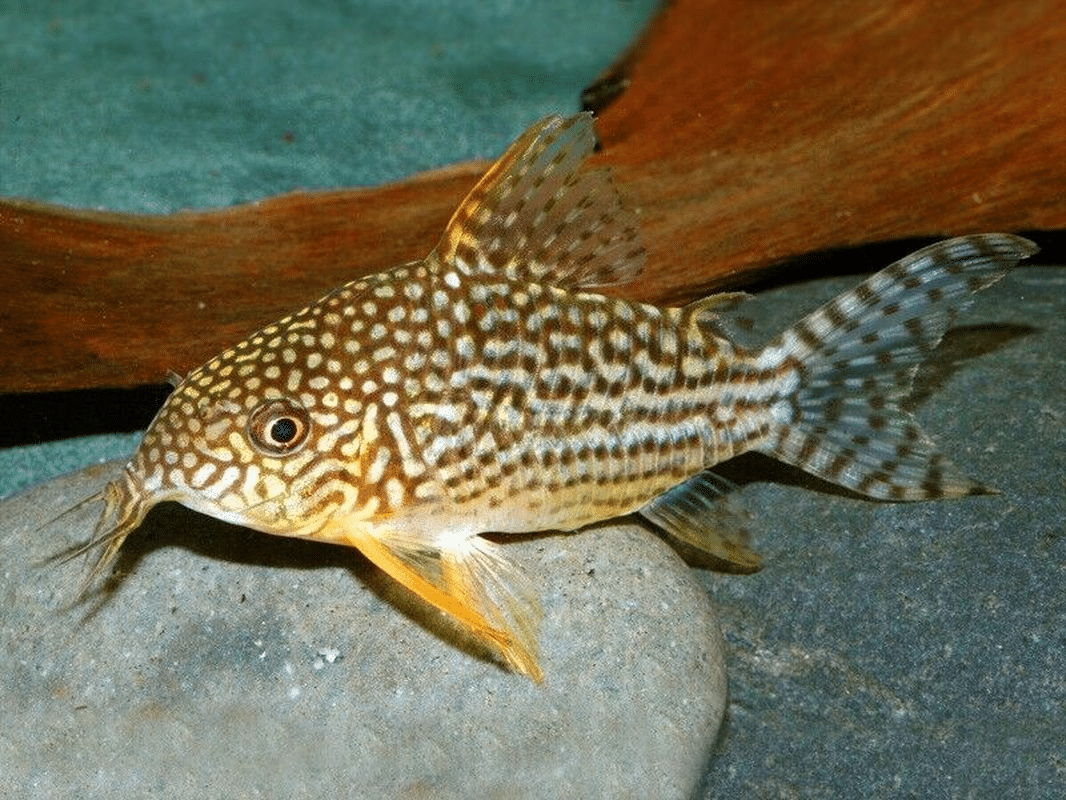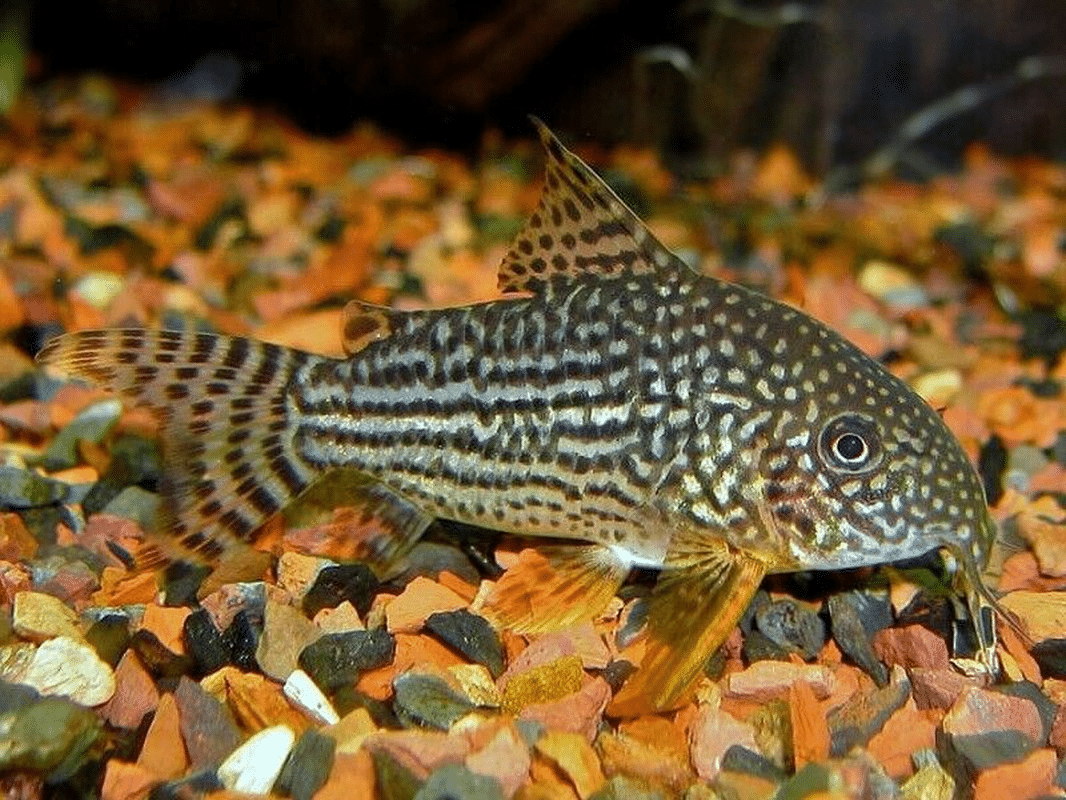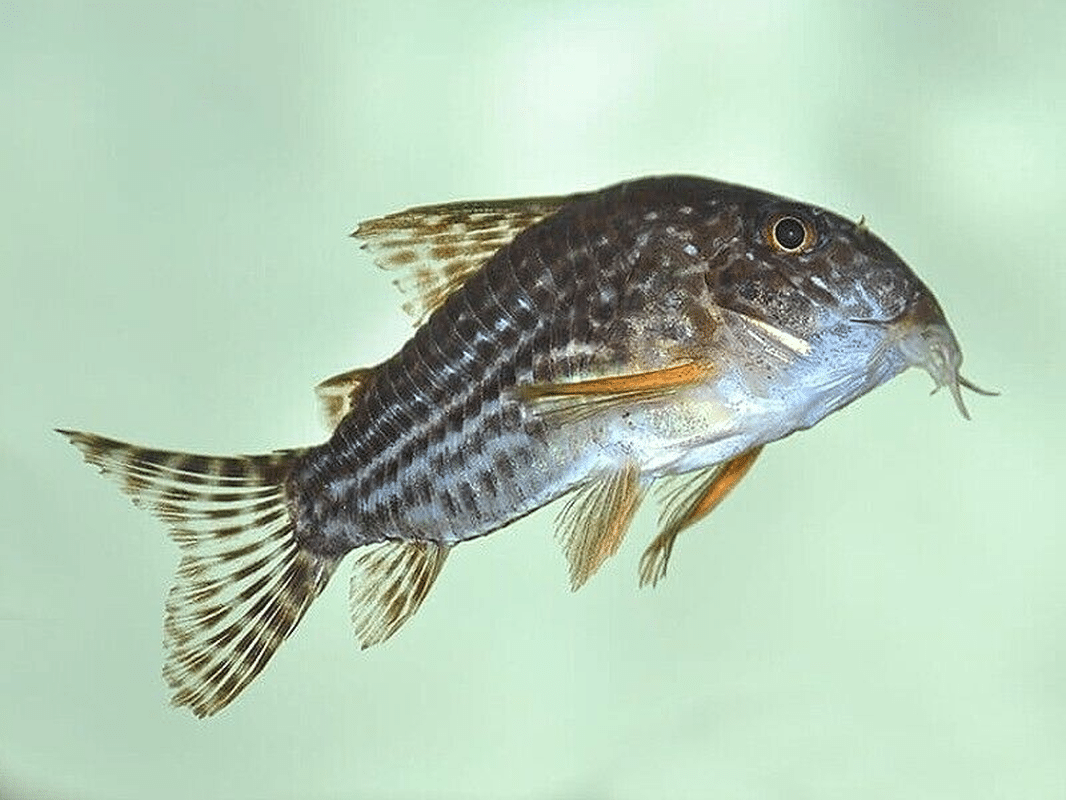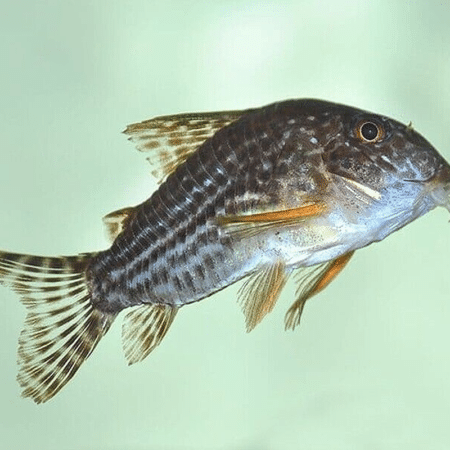Sterba’S Cory – Corydoras Sterbai – Rio Guaporé Cory – South American Catfish, Stunning Addition to Planted Aquariums, Ideal for Beginners Focused on Community Fish Care
£13.99 Original price was: £13.99.£11.61Current price is: £11.61.
Welcome these beautiful Sterba’s Cory, also known as Corydoras Sterbai, to your aquarium! Their striking patterns and playful behavior make them stunning community members. Perfect for beginners, they thrive in groups and enhance the beauty of planted tanks. Provide a loving home for these graceful South American catfish!
4001 in stock
Species Introduction
The Sterba’s Cory, scientifically known as Corydoras sterbai, is a captivating freshwater fish native to the Rio Guaporé basin in South America. This species is part of the larger Corydoras family, which includes various small catfish known for their peaceful nature and adaptability to community tanks. Sterba’s Cory is particularly appreciated for its striking appearance, characterized by a golden-brown body adorned with black spots, which provides a beautiful contrast against the lush greenery of a planted aquarium. These delightful aquatic companions thrive in schools, making them ideal for community setups where they can interact with other peaceful fish species. Their natural habitat consists of slow-moving waters with ample vegetation, which they use for both shelter and foraging. Understanding their origins and natural behavior is crucial for providing a suitable home for these charming fish.
Care Requirements Dashboard
Essential Care Guide for Your Sterba’S Cory
| Optimal Living Conditions | |
|---|---|
| Water Temperature | 22-28°C (72-82°F) |
| pH Level | 6.0-7.5 |
| Water Hardness | 2-15 dKH |
| Minimum Tank Size | 120L (30 gal) |
| Salinity | Freshwater |
| Care Level | Beginner to Intermediate |
Natural Behavior & Temperament
Sterba’s Cory exhibits a peaceful demeanor, making them excellent tank mates for a variety of community fish. They are social creatures that thrive in groups of at least six individuals, which helps to reduce stress and promote natural behaviors. In their natural habitat, these fish are known for their bottom-dwelling habits, where they scavenge for food among the substrate. They often engage in playful interactions, swimming in schools and exploring their environment. Observing their social dynamics can be quite rewarding, as they exhibit unique behaviors such as forming hierarchies within their groups. Their gentle nature allows them to coexist harmoniously with other peaceful species, making them a popular choice for beginners and experienced aquarists alike.
Tank Setup Guide
Creating an ideal environment for Sterba’s Cory involves replicating their natural habitat as closely as possible. A well-planted aquarium with plenty of hiding spots is essential for their comfort and security. Use a soft substrate, such as fine gravel or sand, to prevent injury to their delicate barbels. Incorporating live plants, driftwood, and rocks can enhance the aesthetic appeal of the tank while providing essential cover. Ensure that the tank is equipped with a gentle filtration system to maintain water quality without creating strong currents, as these fish prefer calm waters. Lighting should be moderate to low, as bright lights can stress them out. Regular maintenance, including water changes and substrate cleaning, will help maintain optimal conditions for these beautiful fish.
Water Quality Management
Important Water Parameter Notice
Maintaining stable water parameters is crucial for the health of Sterba’s Cory. They thrive in a pH range of 6.0 to 7.5, with a temperature between 72°F and 78°F (22°C – 26°C). Regular testing of water hardness is also essential, as they prefer soft to moderately hard water (2 – 10 dGH). Frequent water changes, ideally 10-15% weekly, will help keep the water clean and reduce the buildup of harmful substances. Monitoring ammonia and nitrite levels is vital, as these can quickly become toxic to fish. Utilizing a quality water conditioner can also aid in creating a safe environment for your aquatic friends.
Feeding & Nutrition
Sterba’s Cory are omnivorous scavengers, and their diet should reflect this natural behavior. A varied diet will ensure they receive all the necessary nutrients for optimal health. High-quality sinking pellets, flakes, and frozen or live foods such as bloodworms and brine shrimp are excellent options. Feeding should occur 1-2 times daily, providing only as much food as they can consume within a few minutes to prevent overfeeding and maintain water quality. It’s also beneficial to include vegetable matter in their diet, such as blanched zucchini or spinach, to promote digestive health. Observing their feeding habits can provide insight into their well-being; if they are actively foraging and displaying vibrant colors, it is a good sign of health.
Compatibility Guide
Ideal Tank Mates
Sterba’s Cory can coexist peacefully with various community fish, including tetras, guppies, rasboras, and other small, non-aggressive species. Avoid keeping them with larger or aggressive fish, as this can lead to stress and potential harm. When selecting tank mates, consider their swimming habits and temperament to ensure a harmonious environment. Providing a diverse community tank can enhance the overall aesthetic and create a vibrant ecosystem.
Health & Wellness
Maintaining the health of Sterba’s Cory requires regular observation and proactive care. Common health issues include ich, fin rot, and bacterial infections, often resulting from poor water quality or stress. Signs of illness may include lethargy, loss of appetite, or abnormal swimming patterns. To prevent these issues, ensure that the tank is well-maintained, with stable water parameters and a balanced diet. Quarantine new fish before introducing them to the main tank to minimize the risk of disease transmission. In case of illness, prompt treatment is essential, and consulting with an experienced aquarist or veterinarian can provide guidance on the best course of action.
Breeding Information
Breeding Sterba’s Cory can be a rewarding experience for aquarists. To encourage spawning, maintain optimal water conditions and provide a suitable breeding environment with fine-leaved plants or spawning mops. A separate breeding tank may be beneficial to protect the eggs from being eaten by other fish. When ready to breed, females will appear rounder and may exhibit a more vibrant coloration. Males will chase the females, and once spawning occurs, the eggs will be laid on the substrate or plants. After a few days, the eggs will hatch into fry, which should be fed infusoria or finely crushed flakes until they are large enough to consume regular food. Providing proper care for the fry is crucial for their survival and growth.
Acclimation Process
When introducing Sterba’s Cory to a new tank, a gradual acclimation process is essential to minimize stress. Begin by floating the sealed bag in the aquarium for about 15-20 minutes to equalize the temperature. After this, slowly introduce small amounts of aquarium water into the bag over the course of an hour. This process helps the fish adjust to the new water parameters. Once acclimated, gently release the fish into the tank using a net to avoid adding any transport water that may contain harmful substances. Monitoring their behavior after introduction will help ensure they are settling in well.
Long-term Care
Sterba’s Cory can live for several years with proper care, making them a long-term commitment for any aquarist. Regular maintenance, including water changes and monitoring water parameters, is essential for their well-being. As they grow, keep an eye on their social dynamics and ensure they remain in groups to prevent stress. Providing a varied diet and maintaining a stable environment will contribute to their health and longevity. Observing their behavior and interactions with other fish will enhance your experience as an aquarist, allowing you to appreciate the beauty and charm of these delightful catfish.
Natural Habitat Recreation
To create a biotope that mimics the natural habitat of Sterba’s Cory, focus on replicating the slow-moving waters and lush vegetation of the Rio Guaporé. Incorporate fine sand or gravel substrate, along with driftwood and natural rocks to provide hiding spots. Planting a variety of aquatic plants, such as Anubias, Java Fern, and Cryptocoryne, will enhance the aesthetic and provide cover for the fish. Maintaining a gentle water flow with a quality filter will help recreate the calm conditions they thrive in. This setup not only benefits the fish but also creates a beautiful and dynamic aquarium environment.
Seasonal Care Adjustments
As seasons change, so too may the care requirements for Sterba’s Cory. During warmer months, ensure that the water temperature remains stable, as higher temperatures can stress fish. Consider using a heater with a thermostat to maintain consistent temperatures. In cooler months, monitor the tank closely to prevent temperature fluctuations. Adjust lighting duration to mimic natural day lengths, which can influence breeding behavior and overall health. Regularly check water parameters, as changes in temperature can affect pH and hardness levels. Adapting care practices seasonally will help ensure the long-term health and happiness of your aquatic companions.
Expert Tips
For those looking to enhance their experience with Sterba’s Cory, consider implementing these expert tips. First, always maintain a stable environment; fluctuations in water parameters can lead to stress and illness. Second, provide a varied diet to ensure they receive all necessary nutrients. Incorporating live and frozen foods can stimulate natural foraging behaviors. Third, observe their social interactions; if aggression arises, consider adjusting tank mates or increasing the number of Corydoras to disperse aggression. Lastly, engage with your aquarium regularly; spending time observing your fish can reveal insights into their health and happiness, enriching your aquarist experience.
Troubleshooting
Despite careful planning and maintenance, issues can occasionally arise in an aquarium. If you notice signs of illness in Sterba’s Cory, such as lethargy or changes in appetite, first check water parameters to ensure they are within acceptable ranges. If water quality is good, consider potential stressors such as aggressive tank mates or environmental changes. In cases of disease, prompt isolation and treatment are crucial. Familiarize yourself with common diseases affecting Corydoras, such as ich or fin rot, and have a treatment plan ready. Keeping a close eye on your fish will help you catch any issues early and address them effectively.
Scientific Background
The Sterba’s Cory, or Corydoras sterbai, belongs to the family Callichthyidae, which encompasses a diverse group of freshwater catfish. This species was first described in 1961 and has since become a popular choice among aquarists due to its striking appearance and friendly nature. Research into the behavior and ecology of Corydoras has provided valuable insights into their social structures and environmental needs. Conservation efforts are essential, as habitat destruction poses a threat to their populations in the wild. Understanding the scientific background of Sterba’s Cory not only enhances the care experience but also fosters a deeper appreciation for these remarkable fish and their role in aquatic ecosystems.
Advanced Care Techniques
For seasoned aquarists looking to elevate their care for Sterba’s Cory, consider implementing advanced techniques. Establish a breeding colony to observe natural behaviors and contribute to conservation efforts. Create a species-specific tank to focus on their unique needs, including optimal water parameters and diet. Experiment with different food types to promote health and vitality, and monitor their growth and breeding patterns. Engage in regular research to stay informed about new findings related to Corydoras care and breeding. By embracing advanced techniques, you can enhance your aquarium experience and contribute positively to the well-being of these beautiful fish.
Water Quality Parameters
Optimal Range
24-27°C
6.5-7.5
0 ppm
Caution Zone
22-24°C or 27-29°C
6.0-6.5 or 7.5-8.0
0.25-0.5 ppm
Danger Zone
<22°C or >29°C
<6.0 or >8.0
>0.5 ppm
Monitoring Tip: Test water parameters weekly and perform regular water changes to maintain optimal conditions for your aquatic friends!
Frequently Asked Questions
Q: What tank size is required for Sterba’s Cory?
Sterba’s Cory, or Corydoras sterbai, thrive best in a tank that is at least 60 litres (15 gallons). This size allows for a small group of these social fish, ideally kept in groups of six or more to prevent loneliness and stress. A larger tank also helps maintain stable water parameters, which is crucial for their health. Ensure the tank is well-covered, as these fish can be jumpy. Providing plenty of hiding spots and open swimming space will create a comfortable environment for your aquatic companions.
✓ Expert Tip
A larger tank not only improves water quality but also reduces stress and aggression among tank mates.
Q: What water parameters do Sterba’s Cory require?
Sterba’s Cory prefer slightly acidic to neutral water, with a pH range of 6.0 to 7.5. The water temperature should ideally be maintained between 24°C and 28°C (75°F to 82°F). Ammonia and nitrite levels must be kept at 0 ppm, while nitrate levels should not exceed 20 ppm. Regular water changes, ideally 10-15% weekly, can help maintain these conditions. Using a reliable water testing kit will ensure you can monitor these parameters effectively, promoting the health and wellbeing of your fish friends.
✓ Expert Tip
Regular testing of water parameters will help you catch any issues early, ensuring a stable environment for your aquatic companions.
Q: How often should I feed Sterba’s Cory?
Sterba’s Cory should be fed once or twice daily, with the amount adjusted according to their size and activity level. Offer a variety of foods, including high-quality sinking pellets, frozen or live foods, and vegetable matter like blanched peas. It’s essential to only feed what they can consume within a few minutes to prevent uneaten food from degrading water quality. Observing your fish during feeding times will help you gauge their appetite and adjust accordingly.
✓ Expert Tip
Incorporating a varied diet not only keeps your fish healthy but also enhances their colouration and vitality.
Q: What are the best tank mates for Sterba’s Cory?
Sterba’s Cory are peaceful and sociable fish, making them ideal companions for many community tank species. Suitable tank mates include small tetras, rasboras, guppies, and other peaceful bottom dwellers like otocinclus. Avoid aggressive or large species, as they may intimidate or harm your corys. Additionally, ensure that the tank is spacious enough to accommodate the social nature of these fish, allowing them to form their natural shoaling behaviour.
✓ Expert Tip
Choosing the right tank mates is crucial for maintaining a harmonious aquarium environment; always observe interactions closely.
Q: How do I properly acclimatise Sterba’s Cory to my aquarium?
Acclimatising Sterba’s Cory is essential for reducing stress and ensuring a smooth transition to their new home. Begin by floating the sealed bag in your aquarium for about 15-20 minutes to equalise the temperature. Next, gradually introduce small amounts of your tank water into the bag over the course of an hour. This step helps them adjust to the water parameters. Finally, gently release the corys into the aquarium using a net, avoiding adding bag water to your tank.
✓ Expert Tip
A slow acclimatisation process is key; rushing it can lead to stress or shock, which may affect your fish’s health.
Q: What are the signs of healthy Sterba’s Cory?
Healthy Sterba’s Cory exhibit bright colours, active swimming behaviour, and a strong appetite. Their fins should be erect, and they should display natural social interactions with other fish. Look for clear, bright eyes and smooth, unblemished skin. Any signs of lethargy, faded colour, or abnormal swimming patterns can indicate stress or illness. Regular observation of your fish will help you spot any changes in behaviour or health early, allowing for timely action.
✓ Expert Tip
Maintaining good water quality and a stress-free environment is key to ensuring your fish remain healthy and vibrant.
Q: How do I successfully breed Sterba’s Cory?
Breeding Sterba’s Cory requires a dedicated breeding setup, ideally with a separate breeding tank. To encourage spawning, mimic the rainy season by lowering the water temperature slightly and performing frequent water changes with cooler water. Provide flat surfaces, such as broad-leaved plants or spawning mops, for the female to lay eggs. After spawning, remove the parents to prevent them eating the eggs. The eggs typically hatch within 3-5 days, and fry should be fed infusoria until they are large enough for finely crushed flakes.
✓ Expert Tip
Creating a stress-free environment and mimicking natural conditions can significantly improve breeding success.
Q: What type of substrate is most suitable for Sterba’s Cory?
Sterba’s Cory prefer a soft, sandy substrate that mimics their natural habitat. Sand allows them to forage naturally without risking injury to their delicate barbels. Avoid sharp or coarse substrates that can harm their sensitive skin. A substrate depth of at least 5 cm provides ample space for them to burrow. Incorporating smooth pebbles and larger rocks can also enhance their environment, creating hiding spots and visual interest.
✓ Expert Tip
Using a soft substrate not only promotes their natural behaviour but also contributes to their overall health and comfort.
Q: What behavioural patterns should I expect from Sterba’s Cory?
Sterba’s Cory are active and social fish, often seen swimming in groups and foraging along the substrate. They exhibit a playful behaviour, darting around and occasionally displaying a ‘flash’ of colour. These fish are bottom dwellers and will often sift through the substrate for food. They also enjoy interacting with their tank mates and are known for their peaceful nature. Observing their natural behaviours can be a delightful experience for any aquarium keeper.
✓ Expert Tip
Encouraging a natural environment with plenty of hiding spots and companions will enhance their behaviour and overall wellbeing.
Q: How can I prevent common diseases in Sterba’s Cory?
Preventing diseases in Sterba’s Cory primarily involves maintaining excellent water quality and a stable environment. Regular water changes and tank maintenance are crucial. Avoid overcrowding and ensure good filtration. Quarantine new fish before adding them to your main tank to reduce the risk of introducing pathogens. Additionally, observe your fish regularly for any signs of illness, such as changes in behaviour or appearance, and act swiftly if issues arise. A varied diet can also strengthen their immune system.
✓ Expert Tip
Staying proactive in monitoring your fish and their environment is the best defence against disease.
Q: What natural habitat conditions should I replicate for Sterba’s Cory?
In their natural habitat, Sterba’s Cory are found in slow-moving waters with plenty of vegetation and soft substrates. To replicate these conditions, use a sandy substrate and provide ample hiding places such as caves and plants. Keeping the water slightly acidic and warm will mimic their natural environment. Including driftwood and leaf litter can enhance their habitat, creating a more natural and comfortable setting for your fish friends.
✓ Expert Tip
Creating a habitat that resembles their natural environment can significantly reduce stress and improve their overall health.

















Emily Carter (verified owner) –
I recently added Sterba’s Cory (Corydoras sterbai) to my community tank, and I couldn’t be happier! These little catfish are not only stunning with their unique patterns and bright colors but also super active and friendly. After about two months of keeping them, I’ve noticed how they tirelessly scavenge around the tank, keeping the substrate clean and interacting joyfully with my other fish. They are perfect for a community aquarium as they get along well with various species.
Compared to other cory species I’ve kept, the Sterbai are definitely more social and engaging; they seem to have a curious personality that keeps me entertained. I was a bit worried about their care requirements, but I’ve found them easy to maintain with a good diet of quality sinking pellets and occasional treats like bloodworms. Just a tip: make sure to provide some hiding spots and soft substrate since they love to burrow! If you’re looking for an aquarium fish that adds both beauty and activity, I wholeheartedly recommend these cory catfish. They truly bring joy to my tank and brighten my day!
Emily Carter (verified owner) –
I recently added the Sterba’s Cory (Corydoras Sterbai) to my planted aquarium, and I couldn’t be happier! After about a month of observing their behavior, it’s clear they’re a perfect fit for a community tank. Their beautiful, spotted patterns bring so much life to the tank, and they’re such social little fish. I love seeing them scavenge the substrate, working hard to find food and interacting with my other freshwater fish.
One thing I appreciate about these corydoras is their easygoing nature, making them ideal for beginners like myself. I’ve noticed that they thrive in groups, so I started with five, and they are so much more lively together. The only small challenge was ensuring the substrate was smooth enough for their delicate barbels, but that’s a minor detail that any caring fish parent can easily manage.
If you’re looking for beautiful aquarium fish that also contribute to keeping your tank clean, I highly recommend Sterba’s Corys! They’ve quickly become my favorite, and I plan to add a few more to my community setup soon. Plus, shipping was quick, and they arrived healthy and vibrant. Just make sure to provide them with a balanced diet and some hiding spots!